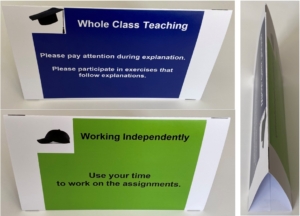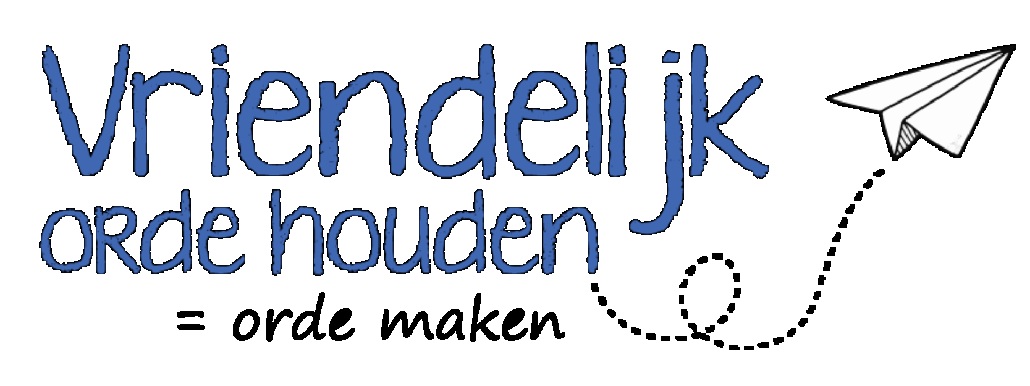Professional language of Friendly and Fair Teaching
This page ‘Professional language’ can be accessed directly via the drop-down menu of ‘About Us’.
Over the years, Friendly and Fair Teaching (FFT) has developed its own professional language to clarify our approach to learning and teaching.
- Some terms or combinations of terms we created ourselves, such as ‘Behaviour Management Strategies’, ‘Future Behaviour Letter’, and ‘Education Medal’.
- Others were invented by students: ‘Tip’, ‘Tip Book’, ‘Motivational Coach’.
- Sometimes we assign existing terms our own specific meaning, such as ‘Tip’, ‘Abacus’, and ‘Framework’.
Any term in quotation marks is explained in detail on this site in a separate paragraph. We usually capitalise these terms to remind the reader that FFT gives them a specific meaning. For the module ‘Framework’, however, we consistently use lowercase because the term is used so frequently there. Using a capital letter in that context would be distracting.
Contents
1. General terms
Order
- In general, ‘Order’ refers to a state in which everything is consciously arranged or proceeds as intended.
- In an educational setting, ‘Order’ refers to the organised and structured environment in which learning takes place. It includes:
– maintaining discipline
– ensuring rules and procedures are followed
– creating an atmosphere that supports effective teaching and learning. This can involve anything from classroom management (keeping students focused and on task) to the systematic arrangement of materials and schedules to ensure a smooth, productive learning experience. ‘Order’ helps students and teachers operate within clear expectations, reduce distractions, and create an environment conducive to learning.
Boundaries
Within FFT, ‘Boundaries’ refer to the limits you establish within which students can make mistakes in terms of behaviour and effort. From the ‘Practice Period’, you clearly indicate the limits of acceptable behaviour, and later you may introduce the ‘Abacus’ to indicate your boundaries even more clearly.
Reflecting on Teaching
‘Reflecting on teaching’ is an ongoing process of establishing and maintaining a positive learning environment. Through ‘Reflecting on teaching’ you improve:
– your lessons
– your teaching methods
With ‘Reflecting on teaching’, you effectively maintain good student behaviour. In this positive learning environment, all attention is directed towards ‘Educational Goals’.
Behaviour Management Strategies
With ‘Behaviour Managment Strategies’ you address either an individual student or the group on behaviour and commitment.
‘Behaviour Management Strategies’ is divided into two parts:
- With ‘First Steps: within boundaries‘ you prevent disruptive behaviour from influencing the lesson by means of ‘Gestures’ and ‘Tips’. The ‘First Steps’: Gestures or Tip, do not take a student time.
- With ‘Next Step: outside boundaries‘ you effectively resolve disruptive behaviour so that it no longer occurs with the ‘Future behaviour Letter’. The ‘Next Step’, the ‘Future Behaviour Letter’, does take a student time.
Whole Class Teaching
Whole-class teaching addresses the entire class. This may be to explain or review important principles, demonstrate skills, or share new information. Before whole-class teaching, you use the green image of the ‘Triangle’ to indicate what you expect from students. Typically, knowledge or information essential for all students is presented from the front of the classroom, often with visual aids such as a board, digital screen, or media. Students listen, take notes, and may ask questions.
Working Independently
During independent work, there is space for a personal approach to individual learning needs, interaction among students, or between students and teacher. Before students begin independent work, you use the green image of the ‘Triangle’ to show your expectations.
Students are enabled to complete tasks without continuous assistance or supervision, taking responsibility for their own environment and workload. This requires organisation, self-discipline, and prioritisation. Independent work may also involve solving problems or taking initiative without waiting for instructions. It is a valuable skill in both academic and professional settings.
Teacher-Centred Education
In ‘Teacher-Centred Education’ you are in control. The beret in the illustration refers to this.
Image: Teacher-centred education
Student-Centred Education
In ‘Student-led Learning’, each student is enabled to take responsibility for their own learning process. The cap in the illustration refers to this.
Image: Student-centred education
FFT advocates alternating between ‘Teacher-Centred Education’ and ‘Student-Centred Education’.
Education Medal
Education can be seen as a medal with two sides: ‘Teacher-Centred Education’ and ‘Student-Centred Education’. The challenge is to make full use of both aspects.
Perspective – Module
The information on this site is divided into five ‘Perspectives’ linked to ‘Reflecting on Teaching’:
- Establishing a Friendly Tone
- Establishing Fairness
- Planning lessons
- Observing Learning
- Behaviour Management Strategies
The ‘Perspectives’ 1, 2, 3, and 5 are divided into ‘Modules’. The sixth chapter, ‘Implementing Friendly and Fair Teaching’, contains overarching topics.
Qualification, Socialisation and Subjectivation
The three educational aims of Gert Biesta are ‘Qualification’, ‘Socialisation’, and ‘Subjectification’.
Chuncking
By ‘Chuncking’ FFT means dividing available teaching time between ‘Teacher-Centred Education’ and ‘Student-Centred education’.
2. Terms used by FFT in the ‘Practice period’
The ‘Practice Period’ is a series of eight consecutive lessons in which you introduce the first five components of ‘Behaviour management strategies’.
Framework
You hang the ‘Framework’ on the classroom wall. During lessons, you evaluate whether events align with the ‘Framework’.
Triangle
In whole-class teaching or independent work, you display the relevant side of the ‘Triangle’. During lessons, you evaluate whether events align with the ‘Triangle’.
Behaviour management strategies
Through ‘Behaviour Management Strategies’, you address a student or the whole group on behaviour and effort.
Gestures
With sets of three ‘Gestures’, you address behaviour or effort: “Please pay attention”, “Please stop talking”, “Please get to work” (First Steps). You can also signal for silence to the entire group.
Tips
A ‘Tip’ is a positive piece of advice where you highlight desired behaviour (without mentioning the undesired behaviour). With a ‘Tip’, you address a student’s behaviour or effort.
Tip Book
In whole-class teaching, you note ‘Tips’ in a ‘Tip Book’. A ‘Tip Book’ is a small notebook in which you record which student received a ‘Tip’, or which student was assigned to write a ‘Future Behaviour Letter’.
Future Behaviour Letter
You address a student’s behaviour or effort with the ‘Letter on Future Behaviour’. This is effective because:
- it takes time for the student to complete
- the student contributes to solving the problem
3. Abacus
You use the ‘Abacus’ to add up the ‘Tips’ given to different students per lesson. If the agreed-upon maximum has been reached and it is necessary to address a student’s behaviour or effort, ask them to write a ‘Future Behaviour Letter’. Here, you distinguish between:
- For whole class teaching, the total maximum number of tips per lesson is 2.
- For independent work, the total maximum number of tips per lesson is 4.
Abacus
With The ‘Abacus’ you add the sixth and final component of ‘Managing behaviour’ to ‘Friendly and Fair Teaching’. Using the ‘Abacus’ limits the maximum number of Tips you can give per lesson. Therefore, you will be able to hand out a ‘Future behaviour letter’ at an earlier stage in the lesson.
4. Motivational coach
Motivational Coach
‘Motivational Coach’ is a term coined by a FFT student. It highlights that you not only teaches and motivate students, but also coache them. As a motivation coach, you enhance students’ intrinsic motivation.
5 Credits
Nick Sorensen – Adviser to Friendly and Fair Teaching
Friendly and Fair Teaching started as a translation from the Dutch educational website ‘Vriendelijk Orde Houden‘. Nick first translated all professional language on that website to English including all terms mentioned above. The Dutch name ‘Vriendelijk Orde Houden’ has been translated by Nick into ‘Friendly and Fair Teaching’.







